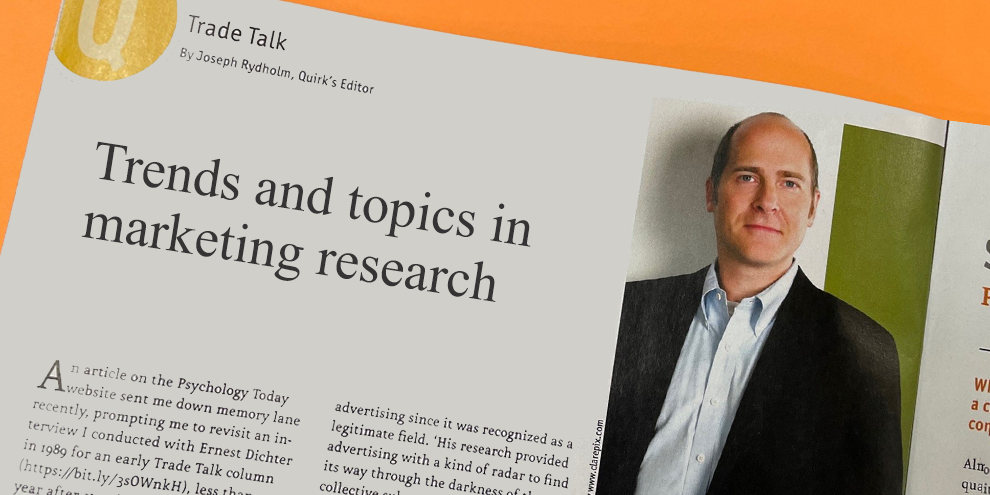At the time of this writing it’s just a few weeks removed from the 2016 Quirk’s Event in Brooklyn. A big thanks to everyone who attended and for all of the feedback – overwhelmingly positive and otherwise! – the Quirk’s team received while we were there. So much work goes into a conference like ours and once it’s in progress, it seems to go by so fast – too fast!
While the details are reasonably fresh in my mind, I wanted to recap some nuggets from a few of the sessions I was able to attend. Exploring ways to increase or maintain the relevance of the internal insights function was certainly something we tried to steer presenters toward as often as we could and I think they delivered quite well on that front!
It was fascinating to hear how Boston Children’s Hospital (BCH) conducted research about itself as a brand and how what it learned was surprising and led to system-wide changes. Health care choices can be so important and life-altering that it almost seems to trivialize health care providers by thinking of them in terms of brands, as if one’s choice of hospital was on par with one’s choice of soft drink. But like any soft drink or other consumer product, BCH found that it had certain attributes associated with it and the research showed there was worthwhile work to be done in educating the market about its other capabilities that were not currently top-of-mind for consumers.
Constant Contact’s Rachel Krug presented a case study on some research conducted by the firm’s digital advertising solutions team and offered some sage advice for researchers of all stripes: stick to metrics that are comparable, understandable and actionable – avoid vanity metrics that will only go up and thus offer no real useful data on the performance of the company or the campaign you are trying to measure.
In a very enjoyable presentation, Lesleigh Campanale of the Institute of Electrical and Electronic Engineers (IEEE) outlined how the IEEE used Webcam interviews and mobile journaling to understand engineers’ daily pain points and how IEEE fit into their lives, with the goal of developing new features or services that could increase IEEE’s relevance to engineers. As a group, engineers would seem to be at the top of any list of people least likely to agree to participate in marketing research so it was refreshing to see that the project not only engaged the engineers throughout but also produced a trove of valuable insights.
Colin Frolich, product marketing manager at Lyft, outlined how an agile research process helped Lyft make fast decisions on the pricing and marketing of its Lyft Line offering. A promotion offering $5 rides was very successful and the firm has found that the cohort who used Lyft under the Lyft Line program has shown great retention.
One of the best talks I sat in on was by Brian Ley, Valspar’s director of consumer and marketplace insights. In a fast-moving 30 minutes he detailed how he has helped bring the company’s insights function, which didn’t exist before 2014, to an admirable level of internal relevance. Part of that process was training internal stakeholders to articulate their insights requests in terms of their own “whys” – that is, why are we undertaking this study and what specific decisions is this project meant to inform? Thirty percent of the 2013 consumer insights budget went to “sacred cow”-type MR projects, Ley said, and proving his function’s relevance meant not being afraid to change or walk away from what had typically or always been done. Increasing a research department’s relevance also means piloting and adopting new insights-gathering technology on a regular basis, he said, with the thinking being that if the insights team doesn’t adopt the technology, some other internal team or department will.
